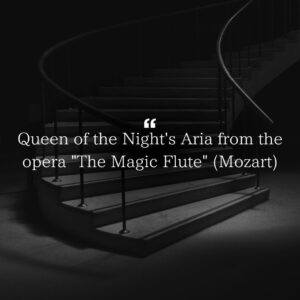「月の光」(フランス語: Clair de Lune)は、クロード・ドビュッシー(Claude Debussy)が作曲したピアノ曲で、彼の代表作の一つです。この曲は、1890年頃に作曲され、1905年に出版されたピアノ組曲《ベルガマスク組曲》(Suite Bergamasque)の第3曲として収録されています。印象派音楽の傑作として知られ、静謐で詩的な雰囲気が多くの人々を魅了しています。
「月の光」は、ドビュッシーが20代後半に書いた初期の作品で、彼の印象派スタイルが確立しつつある時期に位置します。この曲のタイトルは、フランスの詩人ポール・ヴェルレーヌ(Paul Verlaine)の詩「月の光」(Clair de Lune)に由来しています。「ベルガマスク」(Bergamasque)は、イタリアのベルガモ地方の舞曲や仮面劇を指し、組曲全体のタイトルにも使われています。ドビュッシーはこの詩にインスピレーションを受け、静かで夢のような情景を音楽で表現しました。
ドビュッシーの「月の光」は、《ベルガマスク組曲》第3曲として生まれたピアノ曲でありながら、単独でも輝く印象派の名作です。ヴェルレーヌの詩からインスピレーションを受けたこの曲は、静かで夢のような情景を繊細な和声と旋律で描き出し、聴く者に深い感動を与えます。
“Clair de Lune” (French: Claude Debussy) is a piano piece composed by Claude Debussy and one of his most famous works. This piece was composed around 1890 and is included as the third piece in the piano suite “Suite Bergamasque” published in 1905. Known as a masterpiece of impressionist music, its tranquil and poetic atmosphere has captivated many people.
“Clair de Lune” is an early piece written by Debussy in his late 20s, during the period when his impressionist style was beginning to take shape. The title of this piece comes from the poem “Clair de Lune” by French poet Paul Verlaine. “Bergamasque” refers to dances and masked plays from the Bergamo region of Italy, and is also used as the title of the entire suite. Inspired by this poem, Debussy expressed a quiet, dreamlike scene in music.
Debussy’s “Clair de Lune” is a piano piece that was originally created as the third piece of the Suite bergamasque, but is also a masterpiece of the Impressionist movement that shines on its own. Inspired by Verlaine’s poem, this piece depicts a quiet, dreamlike scene with delicate harmonies and melodies, deeply moving listeners.








